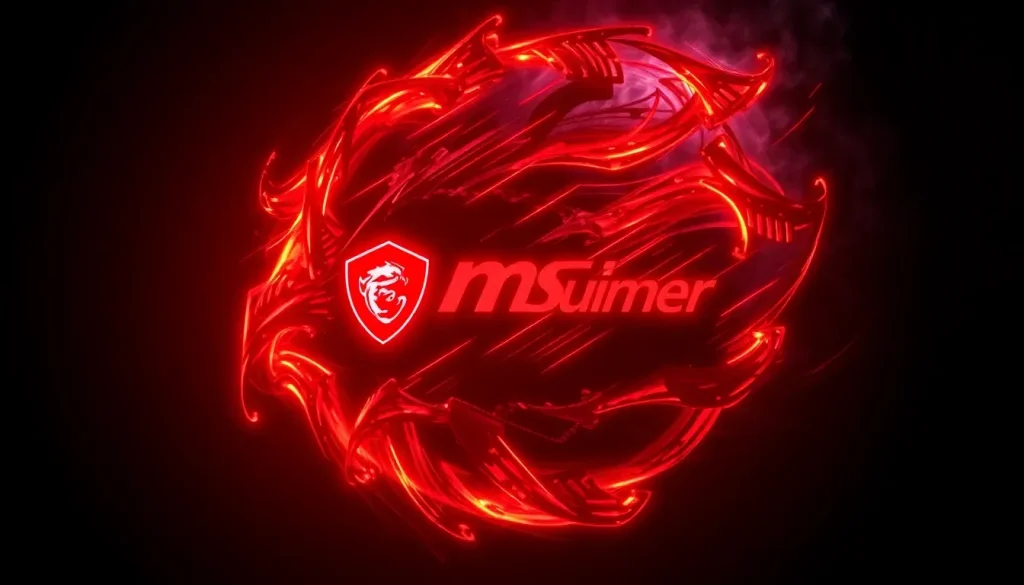MSI Afterburner officially leaves beta phase

After a significant journey marked by user feedback and iterative improvements, MSI Afterburner has officially exited its beta phase, heralding a new era for one of the most popular overclocking and monitoring software among PC enthusiasts. With a revamped interface and a plethora of exciting features, this update aims to enhance the gaming and performance tuning experience for users.
- MSI Afterburner: What’s New in the Latest Release
- Enhanced Overclocking Capabilities
- CPU Support and Experimental Features
- User Interface Improvements
- Safety and Reliability: Is MSI Afterburner Safe to Use?
- How to Optimize MSI Afterburner Settings
- Community Insights: Feedback from Users
- Conclusion: The Future of Overclocking with MSI Afterburner
MSI Afterburner: What’s New in the Latest Release
This new version of MSI Afterburner introduces several enhancements that cater to the evolving needs of gamers and overclockers alike. A major highlight is the native support for NVIDIA RTX 50 series graphics cards, which includes optimizations for performance and thermal management. This means users can expect better performance and stability when pushing their graphics cards to the limit.
Moreover, the software now supports fan control for models with up to four fans, including ASUS’ Astral series. This feature allows users to fine-tune their cooling solutions to maximize airflow and reduce temperatures during intense gaming sessions.
Another significant addition is the compatibility with the MP2988 and MP29816A PWM controllers, which facilitates voltage management on future PCBs utilizing these controllers. This opens up new possibilities for power regulation and performance optimization, particularly for those looking to customize their setups.
Enhanced Overclocking Capabilities
The new MSI Afterburner also introduces an extended memory overclocking limit of +3000 MHz for RTX 50 cards. This capability allows users to push their graphics performance even further, enabling higher frame rates and improved visual quality in demanding games.
- Increased memory overclocking limit for RTX 50 series
- Better thermal and voltage management options
- Support for advanced fan configurations
CPU Support and Experimental Features
On the CPU front, MSI Afterburner has implemented experimental support for the latest Ryzen 9000 and Arrow Lake processors. This feature is particularly beneficial for users who are looking to maximize the performance of their CPUs alongside their GPUs.
Despite its new capabilities, the software has discontinued support for Windows XP, primarily due to the limitations posed by the Visual C++ runtime environment. This change reflects the ongoing evolution of PC gaming and the need to support modern operating systems.
User Interface Improvements
The user interface of MSI Afterburner has received a significant facelift, now featuring a sleek Windows 11 skin that enhances usability and aesthetics. Users can customize their view further by hiding unwanted GPUs, such as integrated graphics processors (iGPUs), simplifying the layout for a more focused experience.
This intuitive design allows users to navigate the software with ease, making it more accessible for both novice and experienced overclockers. The lighter installer also contributes to a smoother setup process, reducing the time it takes to get started.
Safety and Reliability: Is MSI Afterburner Safe to Use?
With the increasing popularity of overclocking, a common concern among users revolves around safety. MSI Afterburner is designed with safety protocols to help prevent hardware damage during overclocking. However, users should always proceed with caution and understand the risks involved.
To ensure safety while overclocking, consider the following tips:
- Start with small increments to avoid crashes.
- Monitor temperatures and performance metrics regularly.
- Use stress-testing software to ensure stability.
By following these guidelines, users can safely explore the limits of their hardware without jeopardizing their systems.
How to Optimize MSI Afterburner Settings
Getting the most out of MSI Afterburner requires careful tuning of its settings. Here are some essential tips for optimizing your configuration:
- Adjust core and memory clock speeds incrementally.
- Test stability after each adjustment using benchmarking tools.
- Tweak fan curves for optimal cooling performance.
These practices ensure that users can maximize their hardware's potential while maintaining system integrity.
Community Insights: Feedback from Users
The transition from beta to a final release has been met with enthusiasm from the community. Users have shared their experiences and suggestions on platforms like Reddit, contributing to the ongoing evolution of the software. For instance, discussions about settings resetting and performance tweaks have become prominent topics.
For those interested in community-led discussions, here’s a relevant video that covers some common issues and solutions:
Conclusion: The Future of Overclocking with MSI Afterburner
The official launch of MSI Afterburner from its beta phase signifies a major step forward in overclocking and performance tuning software. With a commitment to innovation and user experience, MSI continues to support the gaming community by providing powerful tools for optimizing hardware.
Overall, the new features and enhancements of MSI Afterburner are a testament to the ongoing evolution of PC gaming, empowering users to achieve new heights in performance.




Leave a Reply